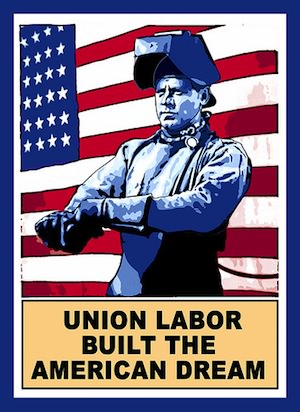American Unions’ Troubles Could Be Fueling a Resurgence in Labor Activism
As the nation's union structures crumble, the stage is set for labor unrest similar to what came during the Great Depression. The reason: reduced mechanisms for mediating grievances as income equality grows.
All those anti-labor laws being passed by Republican-led legislatures around the country could be having an unforeseen consequence: increased labor strife.
Crain’s Detroit, a business publication in the heart of the modern American labor movement, reports that the breakdown of unions in Michigan — the state recently adopted right-to-work laws — has reduced the role of unions as vents for worker grievances. With the structure crumbling, workers are more likely to take to the streets with their protests, or to file complaints with federal regulators and courts.
So the laws aimed at curbing labor might in fact be creating a new generation of radical activists.
“With Michigan’s hourly wages, adjusted for inflation, at the lowest rate in more than 30 years, a new labor movement is afoot,” Crain’s reports. “Local experts say there is an increase in protests and litigation — the unintended consequences of a dismantled union workforce. And it’s going to get worse.”
With stagnant inflation-adjusted wages, lack of job opportunities even though the Great Recession ended four years ago, and a Grand Canyon-sized gap in income equality, one academic sees conditions ripe for increased labor agitation — and not the kind controlled by bureaucratized unions, and thus easy to negotiate away.
Roland Zullo, research scientist at the University of Michigan’s Institute for Research on Labor, Employment and the Economy, said Michigan, along with the rest of the country, is on the precipice of an unorganized, more activist workforce similar to that of the Great Depression.
According to the U.S. Library of Congress, union membership fell to 3 million in 1933, from 5 million a decade earlier.
“We are heading toward what I would call a pre-New Deal environment when the unions were smaller and dispersed,” Zullo said. “They tended to sort of pop up in areas where there was local strength. What it almost always involved was some sort of collective action or protest to force employers to deal with that particular issue.”
At the same time, A recent Pew Research Center study found that labor was regaining some of its luster in the eyes of the American people — more than half supported unions this summer, a 25 percent increase over two years earlier — and that union supporters and members have shifted from predominately white male to a more diverse workforce in which women were heavily represented, MSNBC reported.
The predominance of women and people of color in the labor movement is a relatively recent phenomenon. [City University of New York sociologist Penny] Lewis traced it back to the Vietnam War era, when unions “started organizing within health care and you started to have organizing within the public sector.” At the same time, traditionally unionized sectors of the workforce, such as manufacturing, came under attack from employers looking to cut slash labor costs.
“They fled the most expensive parts of the labor market, which is what had been unionized in the 1930s and 40s,” said Lewis. Because of when they had been organized, unions in those sectors tended to consist overwhelmingly of white men.
“There’s been a wing of the labor movement that’s been historically exclusionary, and still is,” said Columbia University political science professor Dorian Warren. “And that’s been the case with the construction trades.” But for the most part, the American labor movement looks less white and less male-dominated than ever.
There, something to think about as you mull the menu for the Labor Day barbecue.
—Posted by Scott Martelle.
Your support matters…Independent journalism is under threat and overshadowed by heavily funded mainstream media.
You can help level the playing field. Become a member.
Your tax-deductible contribution keeps us digging beneath the headlines to give you thought-provoking, investigative reporting and analysis that unearths what's really happening- without compromise.
Give today to support our courageous, independent journalists.






You need to be a supporter to comment.
There are currently no responses to this article.
Be the first to respond.